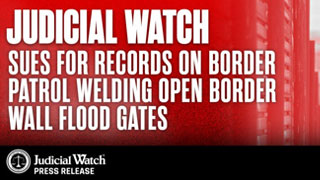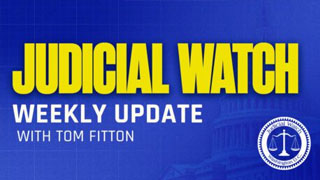

Obama Judge: Mexican Border Fence May Have “Disparate Impact” on Minorities
A Homeland Security initiative to put fencing along the U.S.-Mexico border could discriminate against minorities, according to an Obama-appointed federal judge who’s ruled that the congressionally-approved project may have a “disparate impact on lower-income minority communities.”
This of course means that protecting the porous—and increasingly violent—southern border is politically incorrect. At least that’s what the public college professor at the center of the case is working to prove and this month she got help from a sympathetic federal judge. Denise Gilman, a clinical professor at the taxpayer-funded University of Texas-Austin, is researching the “human rights impact” of erecting a barrier to protect the U.S. from terrorists, illegal immigrants, drug traffickers and other serious threats.
A 2006 federal law orders the construction of fencing or a wall along the most vulnerable portions of the nearly 2,000-mile southern border. This includes reinforced fencing along 700 miles of the southwest border with the Department of Homeland Security (DHS) determining the exact spots. Professor Gilman wants the identities of the landowners in the planned construction site to shed light on the impact the fencing will have on indigenous, minority and low-income communities. The feds refused to provide the information, asserting that it’s private.
The professor sued in federal court arguing that the public interest in how the fence will impact landowners outweighed any privacy concerns. The data will allow the public to analyze whether the government is treating property owners equally and fairly or whether the wall is being built in such a way that it disadvantages “minority property owners,” according to the professor. It will also help the public understand the actual dimensions of the wall and decisions related to where it’s placed.
Judge Beryl Howell, appointed to the U.S. District Court for the District of Columbia by President Obama in 2010, agreed that the public interest is significant. Her 37-page ruling also seems to indicate that she bought the discrimination argument. “Revealing the identities of landowners in the wall’s planned construction site may shed light on the impact on indigenous communities, the disparate impact on lower-income minority communities, and the practices of private contractors,” Howell wrote.
This is simply the latest controversy to strike the border fence project since Congress approved it to protect national security and curb an illegal immigration and drug-trafficking crisis. In the last few years the mayors of several Texas border towns have blocked federal access to areas where the fence is scheduled to be built, an Indian tribe tried to block the barrier in the Arizona desert by claiming the feds were intruding on tribal land and a group of government scientists claimed the fencing would threaten the black bear population.
Last summer Mexican officials expressed public outrage over U.S. efforts to secure the southern border, calling it a human rights violation and an “unfriendly act.” The fact is, a number of government reports have confirmed that it’s not just Mexicans crossing into the U.S. seeking a better life. In 2010 DHS warned Texas law enforcement agencies that a renowned Al Qaeda terrorist was planning to sneak into the U.S. through Mexico. That same year a veteran federal agent accused the government of covering up the growing threat created by Middle Eastern terrorists entering the country through the vulnerable Mexican border.
Violent crime in the region has been well documented with heavily armed Mexican drug cartels taking over chunks of land that serve as routes to move cargo north. In fact, a few years ago a State Department report exposed a “dramatic increase in violence” along the Mexican border and warned of “violent attacks and persistent security concerns” in the area. The document also lists tens of thousands of narcotics-related murders attributed to sophisticated and heavily armed drug cartels competing with each other for trafficking routes into the U.S.














